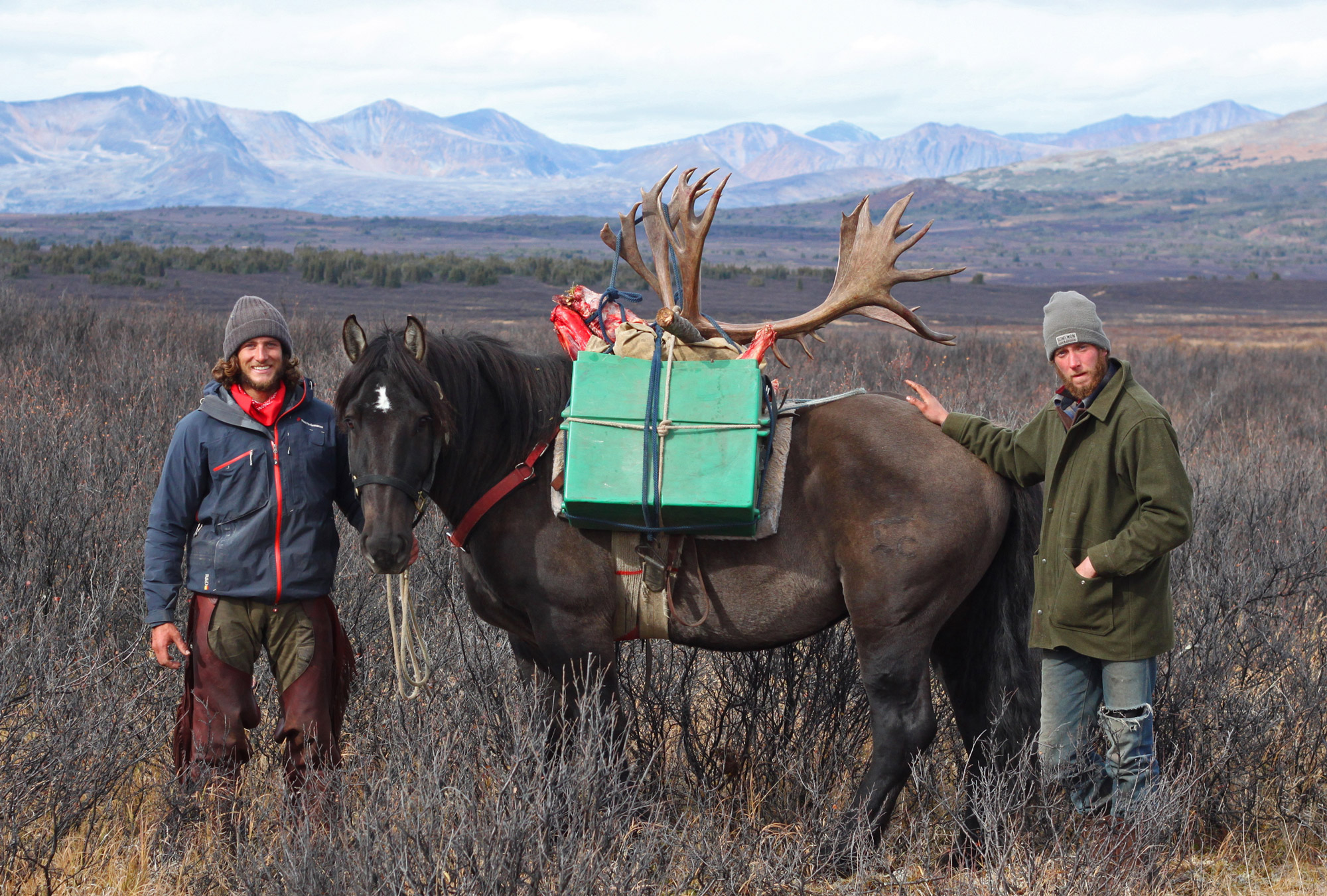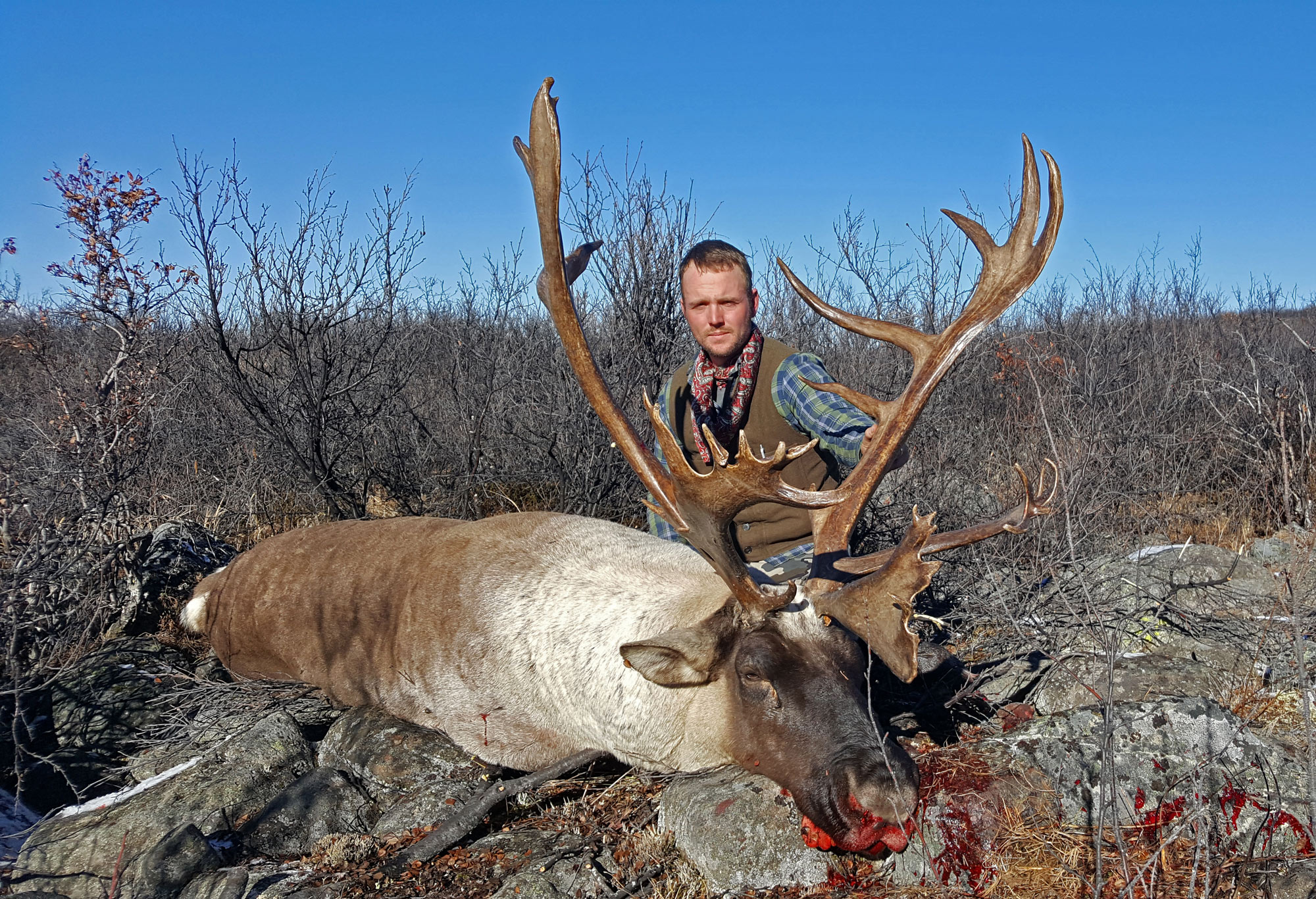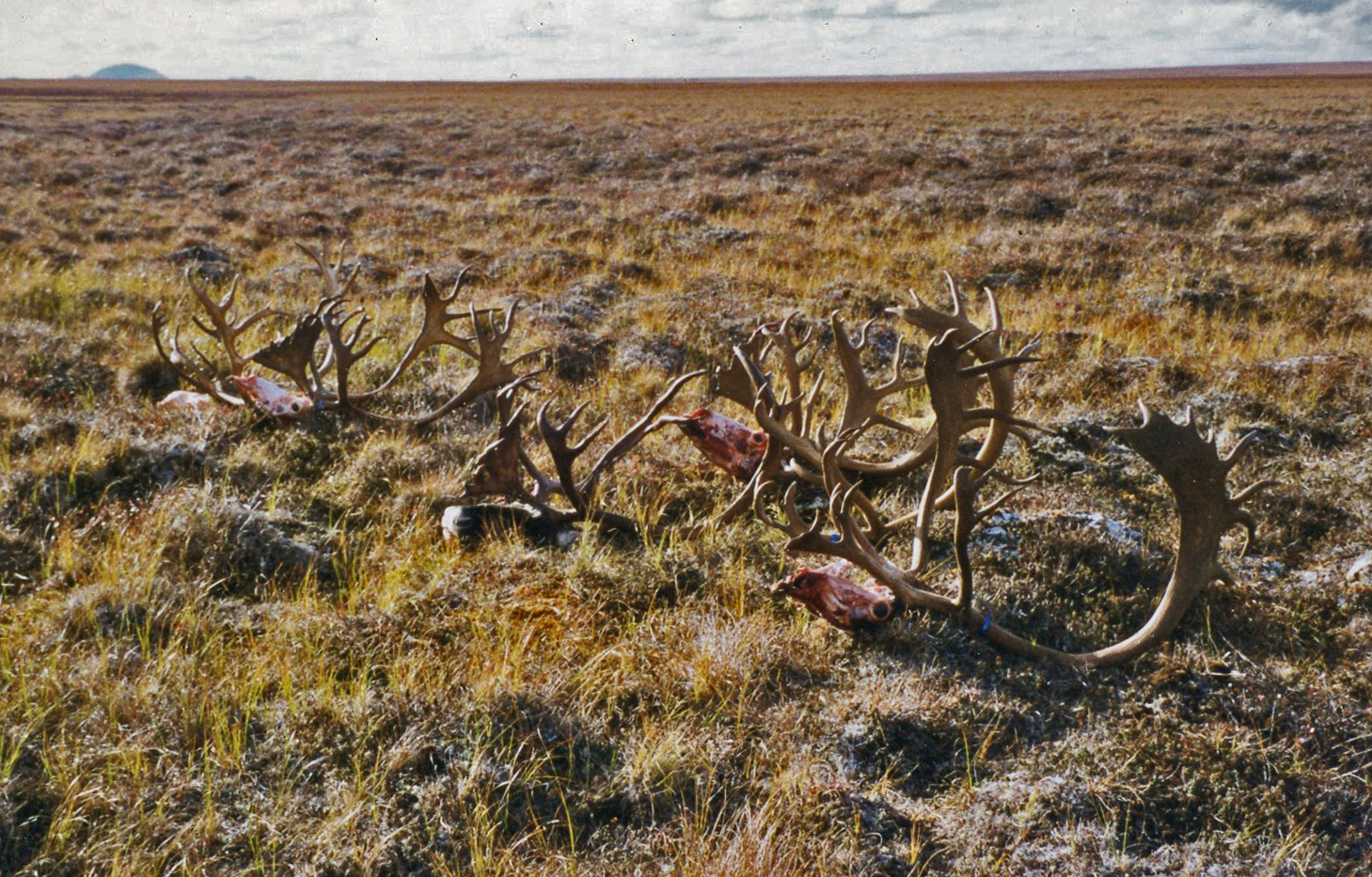
NOTICE: Certain links on this post may earn a commission for Western Hunter Magazine from Amazon or our other affiliate partners when you make a purchase. Thank you for your support.
Bucket List: Caribou
Every big game hunter out there owes it to themselves to go North to hunt at least once, if not more. The problem with going north to Canada or Alaska is the expense. For a great many people, sheep, bear, and moose hunts are prohibitively expensive. The alternative to these pricier adventures is a caribou hunt. In Alaska, a nonresident can hunt caribou without a guide; in Canada, a guided caribou hunt is often the cheapest big game hunting option other than a black bear hunt.
In my opinion, caribou don’t get enough respect as a big game animal. Most of this has to do with the readily available hunting opportunities and the lack of inherent wariness toward humans on a caribou’s part. That may be the case, but when you juxtapose the image of a late September bull with a flowing white mane, chocolate colored body, striking leg markings, and the largest antlers per body size of any North American deer against these prejudices, you can see how the appeal of hunting these animals can win out in some hunters’ eyes.

Alaska resident Ivan Clark with a big early-season velvet bull taken in August. Ivan says that early-season caribou is the best-eating animal in Alaska.
Early-season “summer” caribou can look somewhat awkward with short hair, an almost bug-eyed appearance, and dark velvet-covered antlers. However, as the season progresses, these bulls morph into truly majestic big game animals. Their appearance lends itself to hyperbole and the largest bulls literally can sport rocking chair-sized racks. Add the intangible value of hunting in places without roads and possibly encountering a regal, mature bull that has never seen a human, and the allure for hunting caribou makes more sense.
Been There, Done That
I made my first trip to Alaska in September 1996 for a DIY caribou hunt. On the first morning, two miles distant, the white manes of mature bulls showed up easily in the green alder brush and red tundra mix. I didn’t own a spotting scope at that time, so we simply had to hike closer. The stalk was straightforward and my hunting partner, Gordon Wonacott, and I had our bulls down and were cutting up caribou before noon.
We could have waited and been more selective, but these were above-average bulls, and from what I had read, these animals could flat-out disappear overnight. Some other parties camped at the same airstrip weren’t as hardworking and went home empty-handed.
A couple years later, we made another DIY trip with a couple other friends for a two-week moose/caribou combination hunt. We spent the first ten days moose hunting and then had an outfitter fly us to a caribou camp 50 miles away.
While flying into the area, we could see groups of caribou scattered about. The pilot told us he was putting us down on a pothole lake barely large enough for the Dehaviland Beaver floatplane to take off again.
We set up camp in a treeless, tundra plain a mile or so from a timbered river bottom. The camp location wasn’t the greatest - no firewood and no shelter other than the tent itself. We could see caribou in the distance, so we took a walk to get a look since state law doesn’t allow same day flying/hunting. After an hour or so of walking, the caribou seemed as far away as when we started. We decided our efforts were better spent the next morning actually hunting them.
At first light the next morning, we had caribou groups all around us, so we split into two pairs and headed in different directions. This was the height of the Mulchatna herd population explosion and two tags were allowed. In less than an hour, we all had bulls down less than a mile from camp. I started shuttling meat while Gordon skinned and quartered. That night we had all the meat stowed back at camp and an impressive display of caribou antlers at the lake’s edge.
During the early morning hours that followed, a massive storm plowed in off the Gulf of Alaska and kept us tent-bound for the next two-plus days. During a brief break in the weather, I went for a short walk up onto a little esker to look around. There wasn’t a single caribou in any direction…from thousands to zero in two days. Such is the nature of caribou hunting.

Dylan Massey and Warren Lees with a northern B.C. mountain caribou loaded for the pack back to camp. Horseback mountain caribou hunting is a favorite among guides in the North.
Classifications
There are five subspecies of caribou in North America as recognized by Boone & Crockett Club:
1) Barren ground
2) Mountain
3) Quebec-Labrador
4) Central Canada barren ground
5) Woodland
There are other names/designations by different groups and wildlife professionals, but when hunting caribou, most outfitters have chosen to go with the subspecies designation as laid out by Boone and Crockett Club and that is the simplest way to reference them here.
A barren ground caribou hunt (in Alaska) is the easiest hunt to obtain for a nonresident, because you can readily hunt them without a guide or outfitter. The degree of difficulty in hunting caribou isn’t high, but exceptional bulls can be difficult to find. Even in large groups of caribou, big bulls can make up a relatively small number of the total.
Early in the season, the biggest bulls will likely be found by themselves or in small groups. They are often seen by sheep hunters in August on high mountain passes and basins, escaping the hordes of bugs in the lower elevations.
Bulls rub off their velvet in late August/early September and at that point seem to drop in elevation some and start a gradual, seasonal movement. Bulls are often spotted this time of year wildly rubbing their huge racks in brush and spruce and often use drainages as a pathway to rutting grounds. Their snow-white mane is now growing fast and they become easy to spot.
Blue-Collar Dream Hunt
Caribou hunting is an exceptional opportunity for hunters to experience the adventure of the North Country at a relative bargain. While sheep hunting requires an outfitter and most hunts now are on the wrong side of $15,000, a caribou hunt can be had for a fifth of that, with much of the same experience of enjoying the wilderness and solitude of Alaska.
I personally know quite a few guys who long for a Dall sheep hunt they can’t afford, but won’t pull the trigger on a DIY caribou hunt. This is confusing, because when you ask many guides in Alaska, Yukon, and BC which animal they enjoy hunting the most, it’s caribou.
This makes perfect sense when you break it down:
1) Caribou are somewhat plentiful
2) They are in soul-enriching tundra terrain
3) The hunt is primarily spot and stalk, so it appeals to the hunter/gatherer deep within
4) They are 1/4-1/3 the size of a giant Alaska-Yukon moose, so the logistics and work are easier
5) They have the largest antler-to-body ratio
6) They are incredibly majestic and handsome when in their prime fall pelage.
A big bull caribou in September is one of the most stunning creatures on the planet. All this at a price that doesn’t crater the kids’ college fund.
Mountain Caribou
Mountain caribou range throughout northern British Columbia and on up through the Yukon and Northwest Territories. These animals are often taken as an “add-on” species to a sheep or moose hunt, since the cost of outfitted hunts in there is quite high.
Guided mountain caribou hunts for that animal alone can vary depending on logistics, but can be had for as little as $8,000-10,000 for those with flexibility. While these are expensive hunts, Canadian outfitters do have a massive amount of overhead for their operations and the price is managed by supply and demand.
In certain locations in northern B.C., mountain caribou can grow to massive proportions. I remember what Warren Lees, a friend and guide for Cassiar Stone Outfitters, said when I asked him what his most enjoyable hunts were. He said caribou hunting. “It doesn’t have the glory of sheep hunting, but along with the glory of sheep hunting sometimes comes many sheepless days of rain, climbing, and riding. With moose it can be fun until you kill one. But with caribou, you often have better weather, see lots of animals, and it’s just a fun wilderness hunting experience. Plus, they’re impressive to look at and tasty to eat.

John Schapansky with a monster bodied Mountain Caribou taken with Cassiar Stone Outfitters. This old bull had great mass, character and the striking pelage of an October caribou.
“One of the best opportunities for family members hunting together is a horseback caribou hunt. Chances of success for everyone is high, and unlike moose or sheep, people can actually hunt together without sacrificing opportunity, and just enjoy it. The mountain caribou hunting experience is underrated.”
Woodland Caribou
B&C’s woodland caribou category is for those caribou found in Newfoundland. They are a smaller, compact version – similar to what a blacktail is to a mule deer, but impressive in their own right.
Unfortunately, woodland caribou numbers have been declining steadily for over 15 years. For the 2017-2018 season, there will only be 265 permits issued for nonresidents. This limited opportunity will lend itself to an increase in hunt prices.
Woodland caribou hunting involves fairly simple tactics of just covering country on old roads on foot or ATV. It’s often a secondary species to moose hunting for the East Coast population centers of Canada and the U.S.
Quebec-Labrador
At one time, Quebec-Labrador caribou were probably the most hunted subspecies of caribou out there, but the fall from grace has been steep. Recent news states that the great herds of the northern part of the province have crashed to an alarmingly low level. The George River herd dropped from an estimated population of 3/4 of a million to around 10,000. The Leaf River herd is estimated to be less than one-third of its former population of 600,000 animals. Biologists have accepted the prognosis that there is still more potential for further declines. Thus, Quebec has tentatively closed caribou hunting at the end of the 2017 season.
Currently, the Quebec government doesn’t have an active caribou management plan. The closure was done without much consultation with outfitters, who are still asking for answers. As many as 20 outfitters will close their camps at the end of 2017. If you had any intention of adding a Quebec-Labrador caribou to your trophy room, this fall may be the last chance in your lifetime.
Central Canada Barren Ground Caribou
Central Canada Barren Ground caribou inhabit much of the vast tundra country in northern Canada, including Manitoba and Nunavut Territory. The hunt usually involves fairly extensive travel, including a final air charter to remote tent camps. It’s usually on lakes with boats available to cover distances from basecamp.
Success rates with most outfitters are close to 100% and the hunts are fairly easy. It’s possible to hunt caribou in the remote north that have never seen a human and are more curious than wary.
The costs for such a hunt will hover at or above $10,000 with all included costs and flights. These hunts are appealing to those with some physical limitations and also to those who enjoy a fishing combination, with readily available lake trout, arctic char, and grayling opportunities.
Barren Ground – Changing Dynamics
A lot has changed with caribou in Alaska since I went on two very successful trips over 15 years ago. For me, the itch was scratched for a while, but recently I have begun to mull over the idea of once again experiencing the adventure and wildness of “Caribou Country”.
I started talking to friends and doing some internet research and what I’ve found out is concerning and somewhat shocking. In many areas of Alaska, herds are mere fractions of their former numbers. The Mulchatna herd that I hunted is now numbering only about 30,000 (biological estimates in the ‘90s placed the population at over 200,000).
For many areas of the state, there is no nonresident caribou hunting, as biologists speculate that excess pressure on mature bulls result in lower calf crops. Overgrazing by exploding herd numbers exceeding carrying capacity is the most likely culprit, but lower bull numbers played their part in the decline, too. An interesting fact to support this is yearling bodyweight size data. When the herd numbers plummeted, over a period of time, the yearling body weight average increased with the recovery of the forage base and less pressure on it by massive herd numbers.
I remember flying to and from caribou camps and seeing the mazes of caribou trails for miles in every bit of habitat and mountainside that had forage. Now those trails still exist, but the caribou numbers don’t. I don’t want to sound too alarmist; Alaska still had hundreds of thousands of caribou in herds around the state, but it isn’t what it used to be.
The easy availability of float charters out of Anchorage and Kenai isn’t what it was, either. Much of the caribou hunting available now for nonresidents is north of Fairbanks and the travel time and costs is greater. Another day or two added to the trip, and more costs for at least an additional charter or flight is part of the equation. What that also buys you is additional solitude and the intangible appeal of hunting an animal on the edge of North America.

Great timing on a caribou migration hunt resulted in 4 very happy hunters on the author's last Alaska caribou hunt. If this hunt is on your radar, you are advised to start the planning process. Changes in Alaska and all over Canada have reduced opportunity.
Act Now!
Caribou hunting isn’t extremely difficult and it’s a great less-expensive opportunity for hunters to experience the wilds of the North. As pointed out, caribou populations are in decline in many places, but they’re still in huntable numbers in most places. If you have any intention or hope of hunting caribou in your lifetime, consider moving this adventure higher on your bucket list.
Gearing up for DIY Caribou (Written 2017)
Bombproof tent:
On my second hunt, my hunting partners and I spent 60 hours in a tent weathering out an intense storm. The first night started out with driving rain, and by the second night, the rain had turned to snow. We took turns knocking heavy, wet snow off the tent to keep it from collapsing under the weight. We had a Cabela’s Alaska Guide and Outfitter dome tent with the extra poles in the design, and I’m convinced that without this type of tent, we could have been in trouble. Hypothermia kills, and your tent is your last line of defense against the elements.
Ankle-fit hip waders:
In the caribou country we hunted, I wouldn’t have liked regular boots, since we were often in water up to our knees. Bogs abound and water is everywhere. The ankle-fit design allows a certain snugness and makes for a better, more practical fit for lots of walking.
Bug-proof meat sacks:
The bugs are relentless in caribou country, but the later you go, the less of an issue it is. I’ve used cheap cotton pillowcases that allow some breathing and air without letting bugs in. I saw meat sacks from other hunters at the airstrip that were covered with fly eggs and were inviting a disgusting disaster.
Raingear:
Don’t skimp on this. Your comfort level and life can depend on it. Also, consider a Hilleberg tarp. This 1-lb. item is great for staying out of the rain when you’re away from camp and it’s wet. It can be propped up with a trekking pole in the middle or one side and it has guy lines to stretch out. It’s also an excellent survival item to have in your pack. Staying as dry as possible is a constant battle in Alaska.



